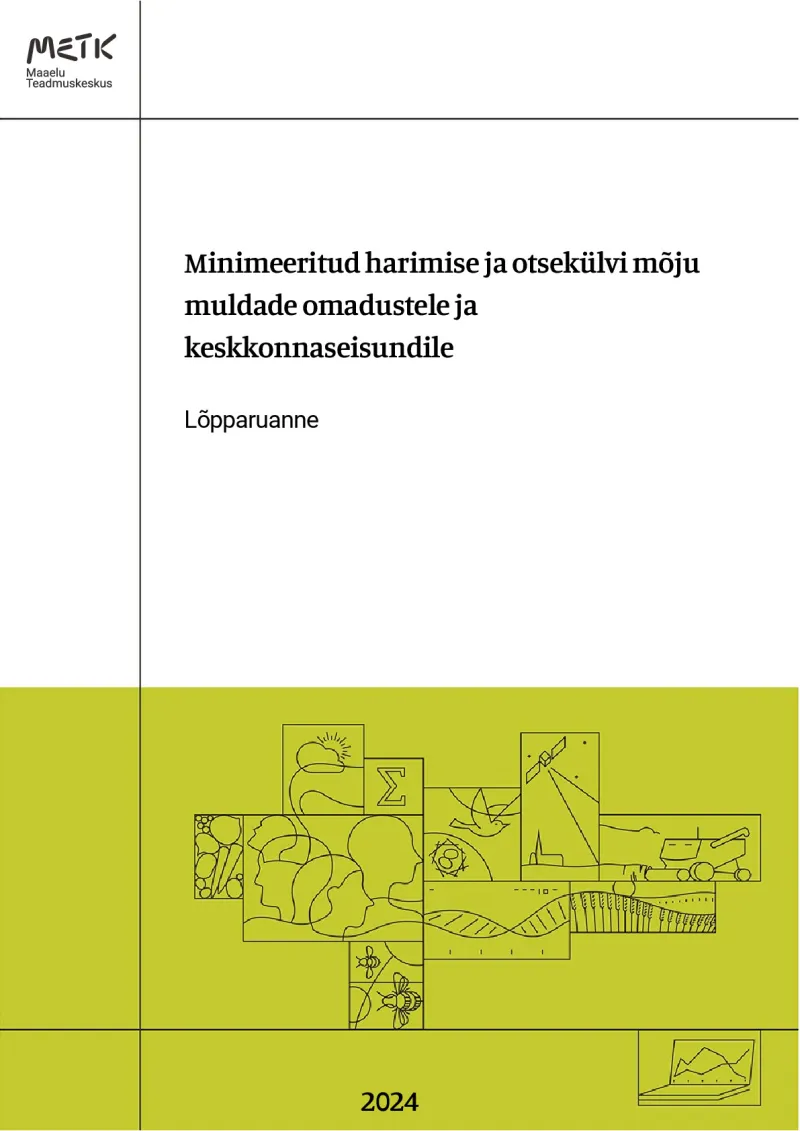Effects of reduced tillage and direct sowing on soil and environment
The study analyses the impact of direct sowing on soil properties and environmental condition in Estonia.
- Estonia
- Environmental impacts

The aim of this study is to assess the impact of direct sowing on soil characteristics and the state of the environment, as a potential anti-erosion agent, accumulator of organic carbon, and a potential change in the nutrient and water regime of the soil, as well as a potential change in the state of soil biota. As a technology, minimalised cultivation is becoming increasingly common, but the impact of this cultivation method on soils has not been studied comprehensively in the Estonian context, taking into account soil characteristics, soil biota, and plant protection products (PPPs) used in fields.
The results of the survey will be used as background information for the evaluation and monitoring of the Rural Development Programme's (RDP) agri-environment support measures and to refine the choice of indicators. It is also possible to clarify the choice and justification of measures supported by CAP, to explain the functioning of different agrotechnologies (such as direct sowing and conventional ploughing) and to provide training for farmers.
The study is based on analysing soil samples and field record book data from fields with different agrotechnologies (direct sowing and ploughing), collected during 2010-2013 in three samplings. Duplicate samples were taken from four production fields: three direct sowing parcels and one ploughed field.
The study found that over the study period (2010-2023), soil reaction had become more acidic in all no-till fields and was also vertically stratified in two direct sowing fields, i.e. the upper layer was more alkaline than the lower layers. The dynamics of the phosphorus (P) content is correlated with the potential of hydrogen (pH - a measure of the acidity or alkalinity) content, because acidic no-till fields have also high phosphorus content as it is not available to plants in acidic conditions.
The study revealed that soil compaction is a problem in two direct sowing fields, where the compaction density in the lower layers is pre-critical for plant growth, and in one direct sowing field area, the aeration of the lower layers is poor. In all areas, the compaction density in the surface layer is lower than in the deeper layers.
The stock of soil organic carbon has increased in areas compared to the baseline in a 0-25 cm layer.
Author(s)
Maaelu Teadmuskeskus (Elsa Putku)